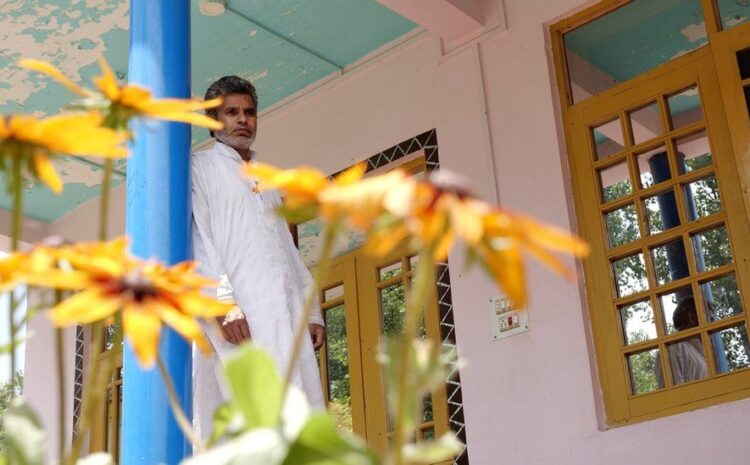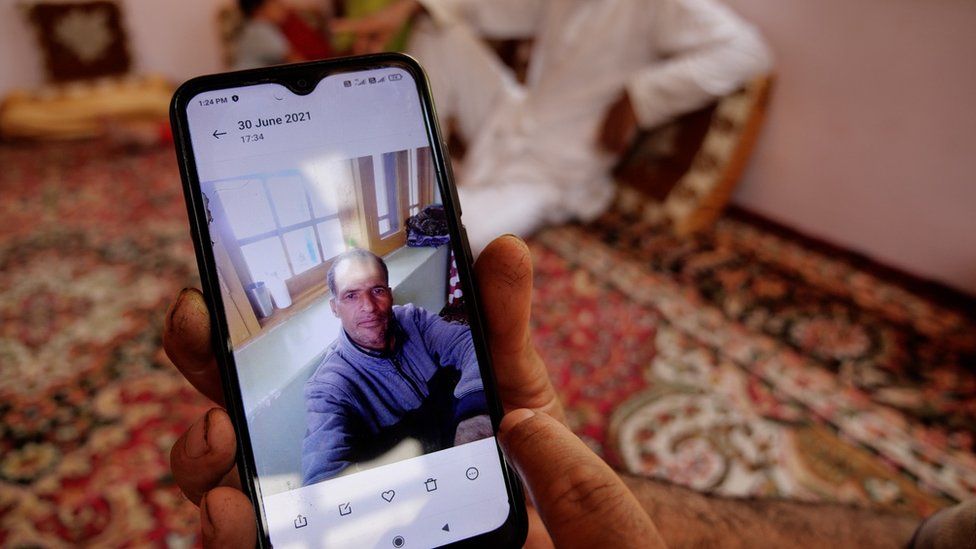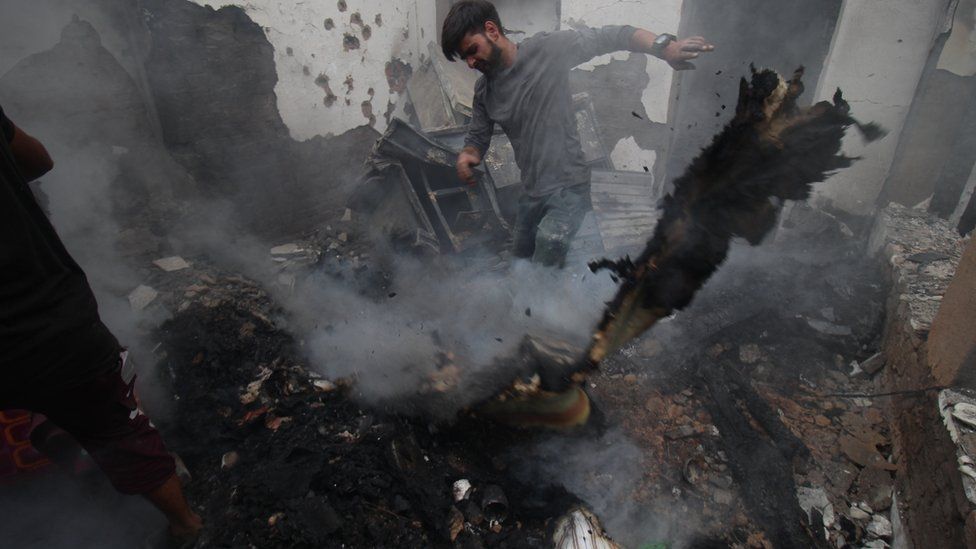
IMAGE SOURCE MUKHTAR ZAHOOR image caption Bashir Ahmad Bhat will never forget the night his brother and family were killed
By Aamir Peerzada
BBC News, India
It was June; Mr Bashir had been preparing to go to sleep when he heard the sound of gun shots coming from next door. Alarmed, he sprang out of bed to check.
A heart-wrenching scene awaited him – his brother lay dead at the entrance of his home. His wife and daughter lay next to him, bloodied and struggling in pain. They died later.
“Those bullets destroyed a garden full of flowers in a minute,” Mr Bashir said. “What was their fault? Nothing.”
The police say the family was shot by militants. Officers like Mr Bashir’s brother, Fayaz Ahmad Bhat, are often targeted in the Kashmir valley, which has long seen militancy against local security forces.
“These are the people the other side calls police informers or collaborators,” said Ajai Sahni, the executive director of Delhi-based defence think tank, the Institute for Conflict Management.
On 5 August, 2019, India revoked nearly all of Article 370 in the constitution, stripping Jammu and Kashmir of the autonomy it had been guaranteed. At that time, Prime Minister Narendra Modi’s Hindu nationalist BJP-led government argued the move was necessary to restore stability and bring economic prosperity to the region.
But two years on, the valley continues to remain tense, with officials saying more local young people are being drawn toward militancy.
 IMAGE SOURCE MUKHTAR ZAHOOR
IMAGE SOURCE MUKHTAR ZAHOORThere has been an insurgency against Indian rule in Kashmir since 1989.
But experts say the resistance is now becoming increasingly homegrown – a worrying trend for the geopolitically sensitive region.
Kashmir has been ravaged by conflict and unrest for decades.
For years, India has accused Pakistan of pushing thousands of militants across the border to foment instability in Indian-administered parts of Kashmir. Islamabad denies the charge.
Relations between the two countries have always been tense but reached a nadir when Delhi unilaterally revoked the region’s special status in 2019.
Narendra Modi justified the controversial decision, saying that Kashmir’s status had been stoking militancy.
Ministers from the BJP government echoed his claims. Some called Kashmir’s status a “historical blunder”, while others insisted that Kashmir is peaceful now “like never before”.
But militant attacks in the region have continued even as security forces have intensified counter-insurgency operations.
Since 2019, the government has altered property rights of locals, triggering widespread suspicion among people. Locals fear the new laws will change the demography of India’s only Muslim-majority region.
Kashmir has a history of a insurgency against Indian rule, and experts say these recent political changes have exacerbated this anger.
A senior security officer, who wished to remain anonymous, told the BBC that of 200 currently active militants, 80 are believed to be from Pakistan and more than 120 are locals.
“Between January and July this year, 76 Kashmiris have picked up arms and the number is anticipated to increase,” the official said.
He said that no new foreign militant had been added to the list of active militants in Kashmir this year.
“But the names of locals are being added every day.”
 IMAGE SOURCE MUKHTAR ZAHOOR
IMAGE SOURCE MUKHTAR ZAHOORNot all of the militants who pick up arms belong to known militant groups. Some are poorly armed and untrained, and often end up dying in gun fights with Indian forces.
Since January this year, 90 alleged militants have been killed in gun fights in Kashmir, government data shows. Nearly all of them are locals, with some reportedly as young as 14.
Mr Sahni said that while the government’s policies have fuelled resentment, local participation has been increasing because Pakistan “now seeks to project that militancy in Kashmir is indigenous”.
But he added that the “overall trend” of militancy has been on the decline.
Security experts attributed this to increased counter insurgency operations, tighter borders and the fall in cross-border infiltration along the Line of Control (LoC) – the de-facto border between India and Pakistan – ever since a ceasefire came into effect in February.
According to security agencies, cross-firing along the border is “just a cover” to push militants into the valley.
An Indian army spokesperson said the ceasefire had not been violated since it was announced in February, because of which “cross-border infiltration has also come down, drastically”.
But peace remains elusive for people like Mr Bashir.
“Both India and Pakistan are playing with our lives,” he said. “There should be a permanent resolution, so that Kashmiris don’t have to die.”

